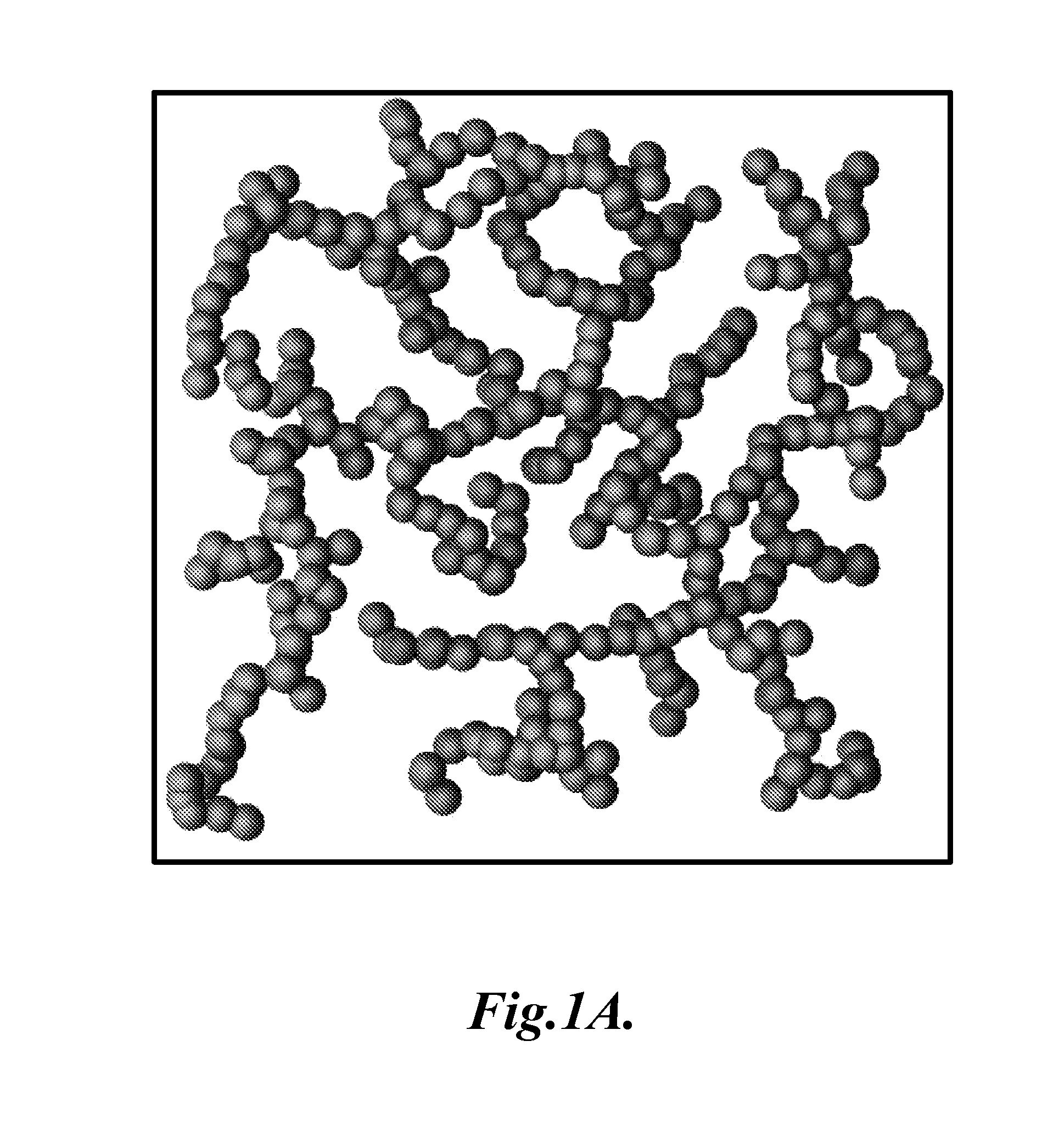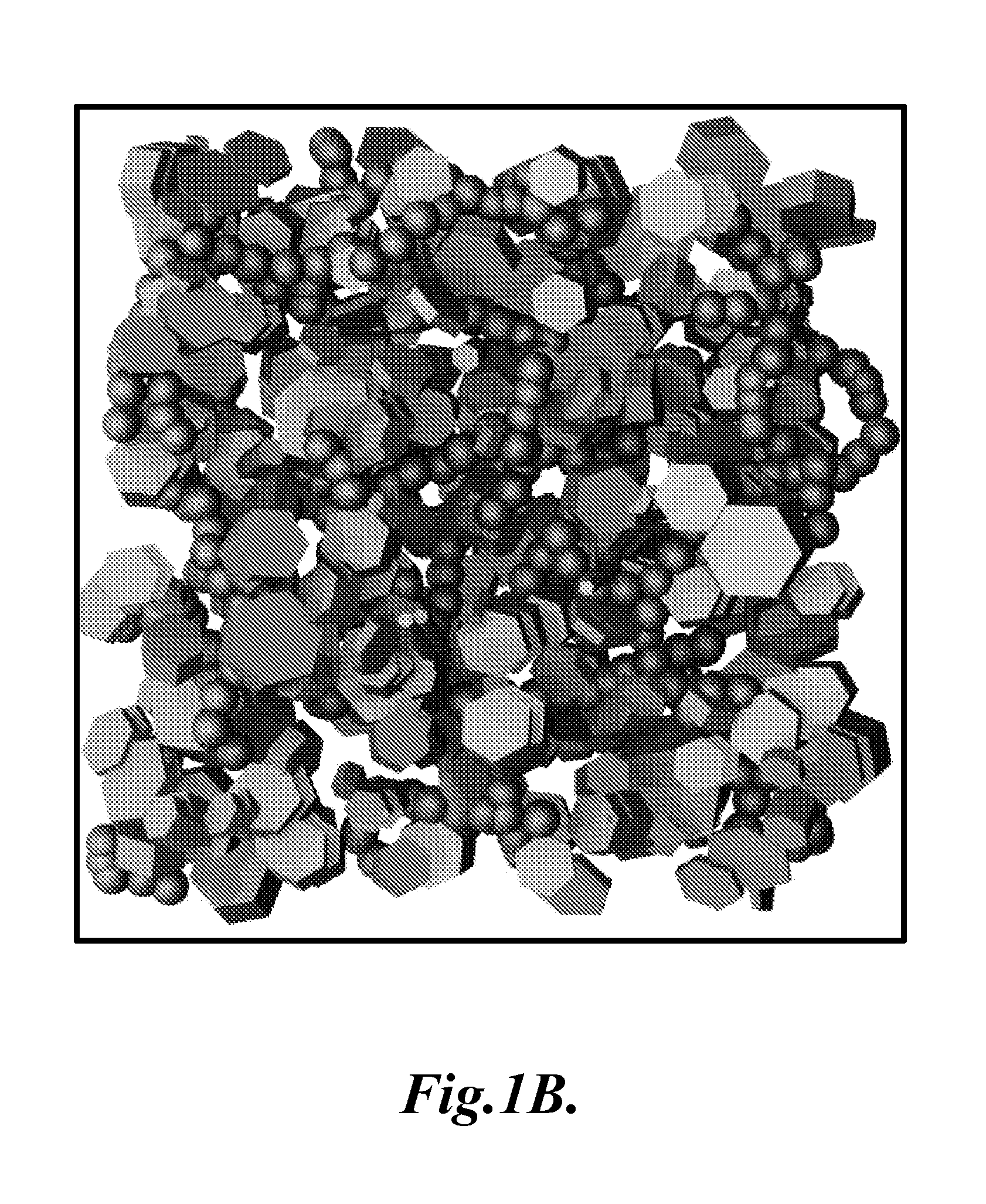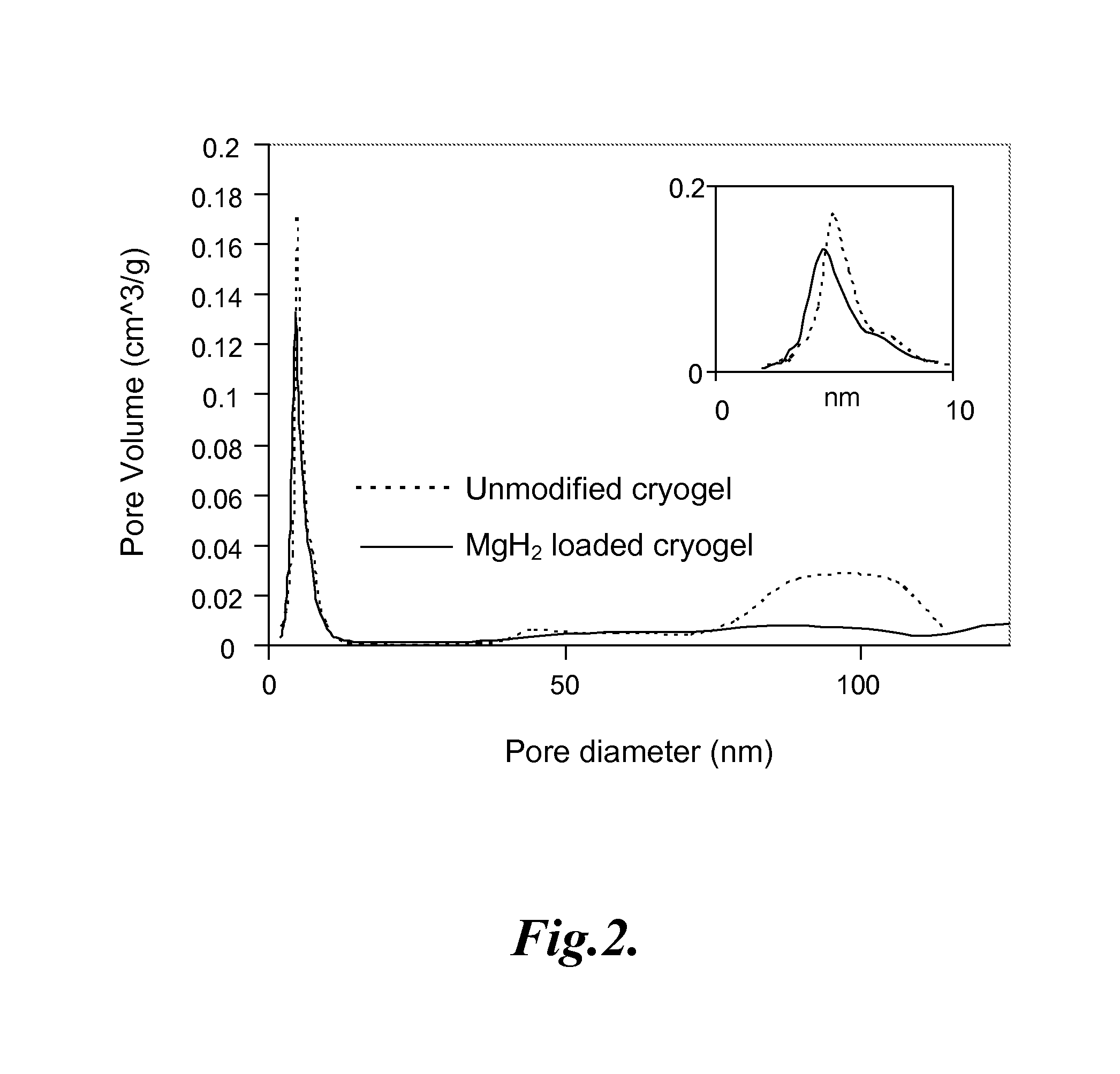Carbon-based foam nanocomposite hydrogen storage material
- Summary
- Abstract
- Description
- Claims
- Application Information
AI Technical Summary
Benefits of technology
Problems solved by technology
Method used
Image
Examples
example 1
The Preparation of a Representative Magnesium Hydride Carbon Cryogel Composite
[0086] The chemicals utilized in this example are as follows: resorcinol {99+%, Sigma-Aldrich, C6H4(OH)2}, formaldehyde solution {37%—stabilized with methanol (C2H5OH), Fisher Scientific, COH2}, sodium carbonate {99.5%, Sigma-Aldrich, NaCO3}, trifluoroacetic acid {99%, Aldrich, C2HF3O2}, tert-butyl-alcohol (t-butanol) {99.8%, J. T. Baker, (CH3)3COH}, and magnesium hydride {MgH2}. These were used as received without further treatment. Carbon cryogels with resorcinol:catalyst ratio (R / C) held at 50:1 or 200:1, the weight percent solids at 5% (R / W) were fabricated using the method described in Pekala, R W., Journal of Materials Science 24(9):3221-7, 1989, as modified by the method described in Tamon, H., Ishizaka, H., Yamamoto, T., Suzuki T., 379(12): 2049-55, 1999. The molar ratio of resorcinol to formaldehyde was maintained at 1:2 for all sols. The sols were prepared by admixing resorcinol and formaldehyde...
example 2
The Preparation of a Representative Ammonia Borane Carbon Cryogel Composite
[0090] Ammonia borane (AB) AB was added to THF until saturation and then loaded into a carbon cryogel to achieve a 37% by weight AB composite material. AB shows a significant reduction in decomposition temperature. FIG. 9 shows the decomposition peak for bulk AB at about 100° C. While the AB carbon cryogel composite demonstrates the same peak hydrogen release temperature, the hydrogen release begins at a much lower temperature of 50° C., indicating a significant change in the reaction. This is supported by FIG. 10 which shows a change in the thermodynamics as demonstrated by differential scanning calorimetry (DSC) (heating rate of 1° C. / min). FIG. 10 shows an endothermic reaction starting at the same temperature that hydrogen release begins. FIG. 11 also shows a change in the reaction byproducts. AB when dehydrogenated in bulk will release large quantities of borazine. This is not the case for the AB carbon ...
example 3
Metal Catalyst Addition to Carbon-Based Foams
[0091] Carbon-based foams are doped with transition metal catalysts including Ni, Ce, and Zr catalysts. Two sets of sols with R / C:50 and R / C:300 were made and then further separated into four, to which nickel acetate and Ce / Zr acetate were added in small quantities. The nickel acetate was added to each batch at 2.5% of the weight of resorcinol and the equal molar combination of Ce / Zr acetate was added at 3.1% of the weight of resorcinol. The carbon-based foams were then processed according to the standard route (as described above) to create carbon-based cryogels, but were not activated in CO2. The cryogels were characterized by TEM and XRD revealing the presence of the catalysts in the cryogel lattice.
PUM
| Property | Measurement | Unit |
|---|---|---|
| Temperature | aaaaa | aaaaa |
| Temperature | aaaaa | aaaaa |
| Temperature | aaaaa | aaaaa |
Abstract
Description
Claims
Application Information
 Login to View More
Login to View More - R&D
- Intellectual Property
- Life Sciences
- Materials
- Tech Scout
- Unparalleled Data Quality
- Higher Quality Content
- 60% Fewer Hallucinations
Browse by: Latest US Patents, China's latest patents, Technical Efficacy Thesaurus, Application Domain, Technology Topic, Popular Technical Reports.
© 2025 PatSnap. All rights reserved.Legal|Privacy policy|Modern Slavery Act Transparency Statement|Sitemap|About US| Contact US: help@patsnap.com



